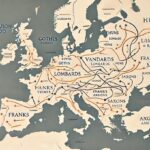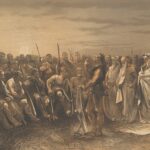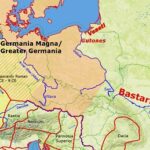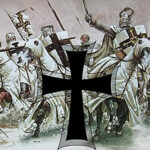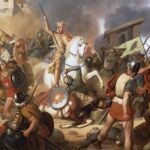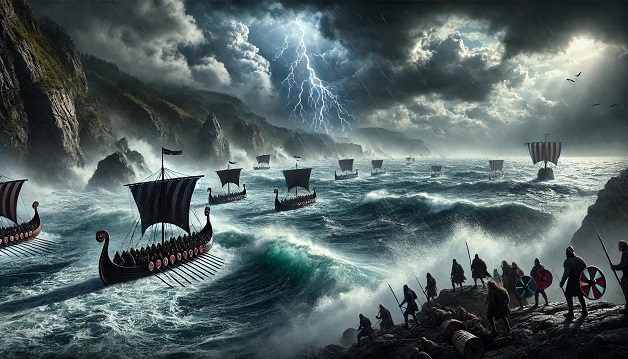
When most people think of Vikings, they imagine longships slicing through foggy waters, warriors in hornless helmets raiding English monasteries. But the Vikings didn’t only head west—they also looked south and east, toward the Germanic lands.
From the late 8th to the 11th centuries, the Vikings touched many corners of Europe, and their encounters with what is now Germany were far from one-dimensional. While raids certainly happened, so did trade, diplomacy, and even cultural blending. The result? A quieter but still powerful Viking legacy in northern Germany that shaped the region’s political and economic development.
Let’s set sail into the world of the Vikings—and their often-overlooked influence on medieval Germany.
Viking Raids in Northern Germany
The first recorded Viking raids in German coastal territories began around the early 9th century. These raids focused on the North Sea and Baltic coasts—regions that were rich in trade and vulnerable to sudden attacks.
- Dorestad, a major Frankish trading center near the Rhine, was repeatedly raided.
- Monasteries in Hamburg, Bremen, and along the Elbe River faced destruction.
- Viking ships used rivers like the Weser and Elbe to strike deep into inland areas.
These attacks shocked the local populations and forced rulers like Charlemagne and Louis the German to develop new coastal defenses, including fortified bridges and watchtowers.
Defensive Responses and the Rise of Fortresses
In response to the Viking threat, German rulers initiated new policies:
- The building of fortified settlements, or burhs, around vulnerable towns.
- Enhanced naval patrols along the North Sea coast.
- Strategic alliances with Slavic tribes to monitor Baltic access points.
In fact, the threat of Viking incursions accelerated the militarization of northern Germany—a shift that would influence medieval castle-building in the region.
Viking Trade and Cultural Exchange
While the early Viking interactions with Germany were violent, by the 10th century, the focus shifted to trade and diplomacy.
Vikings established commercial ties with German merchants:
- Goods like amber, furs, salt, and weapons were exchanged for silver, wine, and textiles.
- Viking traders visited Frisian ports and mingled in markets in Saxony and Hesse.
- Artifacts like Scandinavian jewelry and swords have been found in German burial sites, indicating cultural overlap.
The coastal town of Hedeby (near the modern German-Danish border) became one of the most important trading hubs in northern Europe—linking Vikings to the Carolingian Empire and beyond.
Political Alliances and Shared Power
By the late Viking Age, relationships were no longer just raider-victim. Viking leaders sometimes acted as political allies or mercenaries in German affairs:
- Viking mercenaries served in the armies of German nobles.
- Treaties were signed with Viking chieftains to secure peace or trade routes.
- Intermarriage between local elites and Scandinavian families helped stabilize northern regions.
In some coastal areas, Norse customs and legal traditions were even blended with Germanic law.
Religious Shifts: From Pagan Raiders to Christian Neighbors
Christianity eventually reached Scandinavia—and with it, the Viking role in Germany changed dramatically. Converted Viking leaders such as Harald Bluetooth promoted peaceful contact with their Christian neighbors.
By the late 10th century:
- Viking raids in Germany diminished significantly.
- Monks and missionaries traveled more freely between Saxony and Scandinavia.
- Churches and monasteries appeared in previously Viking-afflicted areas.
The result was not just an end to conflict—but a new cultural dialogue between two once-hostile worlds.
Archaeological Footprints
Archaeology has revealed the subtle but enduring presence of Vikings in Germany:
- Runestones and Norse inscriptions found in northern regions.
- Burial sites with Viking-style weapons or ornaments.
- Settlement layers in port towns showing Norse building techniques.
These finds confirm that the Viking influence wasn’t just a moment—it was a century-spanning presence that reshaped northern Germany’s landscape.
The Viking story in Germany isn’t told with as many battles or sagas as in England or France—but it’s just as fascinating. Through raids, trade, and eventual cooperation, the Vikings helped transform the economic and political structure of northern Germany.
They left behind more than fear—they left behind tools, towns, alliances, and ideas. To see how this fits into the bigger picture, explore The Saxons and Their Conversion to Christianity, Charlemagne and the Carolingian Empire, and German Castles to trace the legacy of power and protection along Germany’s ever-changing frontier.


